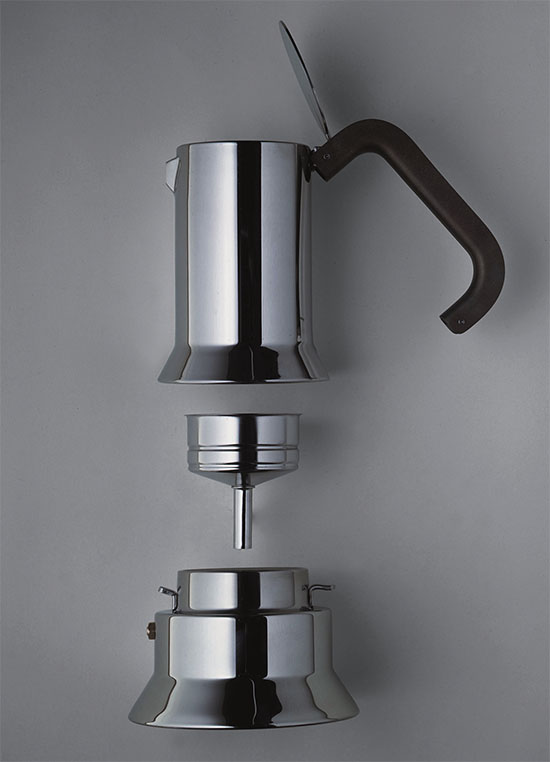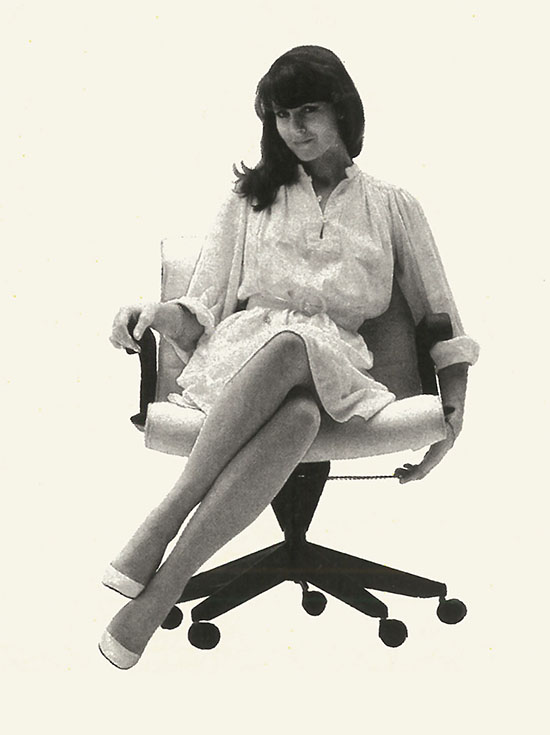Richard Sapper
The designer Richard Sapper developed and designed a wide variety of products, ranging from ships and cars, to computers and electronics as well as furniture and kitchen appliances. His many clients included Alessi, B&B Italia, FIAT, Heuer, Kartell, Knoll, IBM, Molteni, Pirelli and many others.“To create a product that is not functional is useless,” he explained. “If the design doesn’t work, then it is a mistake. But if a product is only functional, and it doesn’t have some formal expression that helps in creating a relationship between you and the product, then it’s not a good design. A good design must have this property of awaking the interest of the person who looks at it, or keeps it in his hand, or whatever he does with the object. This effect can create a relationship between an object and a person.”

An essay by Jonathan Olivares / Courtesy of Phaidon Press.
In March 2008, while in the midst of compiling the book A Taxonomy of Office Chairs, I met with Richard Sapper to discuss the eponymous chair he designed for Knoll in 1978.
Our discussion revealed Richard’s complex, considerate, and intuitive decision-making process. I learned that his Sapper Chair, made with rolled-steel profiles, was intended as a lifeline to a steel car-bumper factory he had nearly put out of business when he invented the plastic bumper for FIAT.
When I inquired why so many of his products are black, I expected to hear some dogma about restrained visual expression, but I was pleasantly surprised when he stated that black is not only easy to clean but looks good in any environment, whatever the aesthetic climate. And when I asked why the leather upholstery of his chair for Knoll is folded into darts that close the leather in a decorative gesture, he became frustrated, as if I had missed something obvious. “Because it is nice!” he exclaimed.
Richard was preoccupied with the livelihood of his factory-owning friends. He was concerned about whether his objects would be kind to his customers’ varied and personalized interiors, and he cherished both industrial processes and crafted details. His multifarious and human approach to design dealt with industry, craft, and interiors practically and generously.
Notorious for his disinterest in speaking about his work, Richard preferred to let his products speak for themselves. While he might not be comfortable in a formal interview format, I felt that Richard’s career does provide us with a manifesto of working methods that can be summarized as follows:
He dealt with products of all scales, from pens to buses, and from objects made in low volumes to products manufactured in the millions.
He dealt with manufacturers of all scales, from personal exchanges with family-owned businesses to corporate consulting within large organizations.
His objects were often poetic, such as the ThinkPad laptop that hides a surprise (the keyboard and digital content) inside a simple black box.
Richard’s products embrace a long tradition of man-made objects, and often reference features of pre-modern furniture, such as the armrests of his Sapper Chair, which echo the armrests of a wooden chair that has been in his family for generations.

Many of his works involve movement, and visually express the gravity, rotation, and equilibrium that enable them. This approach takes advantage of natural principles and offers the user a connection to and an understanding of them within the framework of the man-made object.
This is a simplistic view of Richard’s career, the varying conditions, motives, and histories that surrounded and stimulated his process, but it shows the complexity and nuance that existed in his projects.
